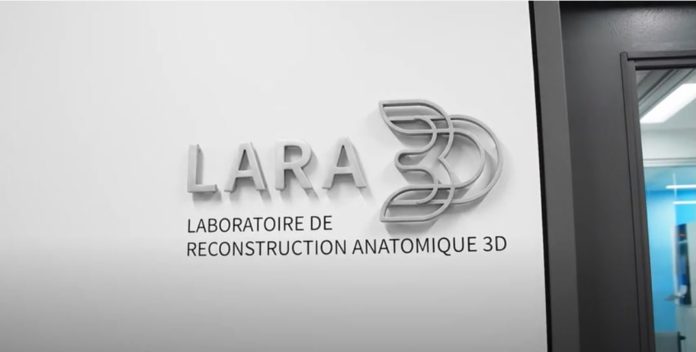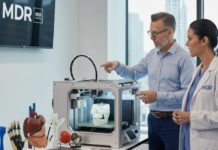Investissement Québec – CRIQ and the CHU de Québec – Université de Laval are proud to present the 3D anatomical reconstruction laboratory (Laboratoire de reconstruction anatomique 3D or LARA 3D), a unique infrastructure that gives Québec leading-edge equipment and advanced expertise for the manufacture of patient-specific implantable prostheses thanks to the use of 3D imaging, modelling and manufacturing technologies.
This project was made possible by the exceptional collaboration between an applied industrial research centre, Investissement Québec – CRIQ, and a university hospital centre, the CHU de Québec–Université Laval, with the participation of SOVAR, an organization dedicated to the emergence, development and deployment of responsible technological and social innovations stemming from cutting-edge research.
To date, the partners have invested just over $8 million to purchase 3D printers and specialized equipment, set up research spaces, design and manufacture the first prototypes, conduct usability tests and launch the approval process for new products with a view to their commercialization.
The Québec government contributed $3,477,873 from the research infrastructure financing component of its Research Support program.
Innovative products to benefit patients
The first innovation to emerge from LARA 3D is an implantable mandibular reconstruction plate for people with oral cancer affecting the jawbone. 3D printing, or additive manufacturing, makes it possible to solve the conformity problems encountered with industrial prostheses, which are standardized for a typical patient and therefore never perfectly adapted to individuals.
An implant can now be custom-designed based on internal imaging of the patient to match the unique contours of the bone to be repaired. It is manufactured from biocompatible metals using 3D printing by powder bed fusion with a laser or electron beam. LARA 3D also has specialized equipment that can be used to finish products, ensure their quality and traceability, and clean and sterilize them before they are delivered to the medical team.
The ISO 13485 certification process is under way to ensure that the development and manufacturing of specific prostheses meets the strictest quality requirements for the production of medical devices. At the same time, work is continuing in anticipation of applying for a licence from Health Canada, with the aim of being the first Canadian manufacturer to have approval of a 3D-printed implantable medical device.
The use of additive manufacturing for the production of orthopedic prostheses will raise the quality of care in Québec. The time spent in surgery, and therefore the associated costs, will decrease. In addition, since the implant is a better fit and more comfortable, patients will recover faster.
Private-sector involvement
The entire additive manufacturing sector in Québec, with its companies specializing in modelling, powder production and 3D printing, will benefit from LARA 3D’s equipment and expertise and will be able to participate in advancing know-how and techniques. Alkom Digital (orthopedic screw manufacturing) and AP&C (production of metal powders for 3D printing) are already partnering in the implantable mandibular plate project.
At the core of a new hub of Québec expertise in medical 3D printing, LARA 3D will make it possible to design and produce other orthopedic implants in partnership with the private sector and will foster the creation of very high-quality specialized jobs.
Remember, you can post free of charge job opportunities in the AM Industry on 3D ADEPT Media or look for a job via our job board. Make sure to follow us on our social networks and subscribe to our weekly newsletter : Facebook, Twitter, LinkedIn & Instagram ! If you want to be featured in the next issue of our digital magazine or if you hear a story that needs to be heard, make sure to send it to contact@3dadept.com






